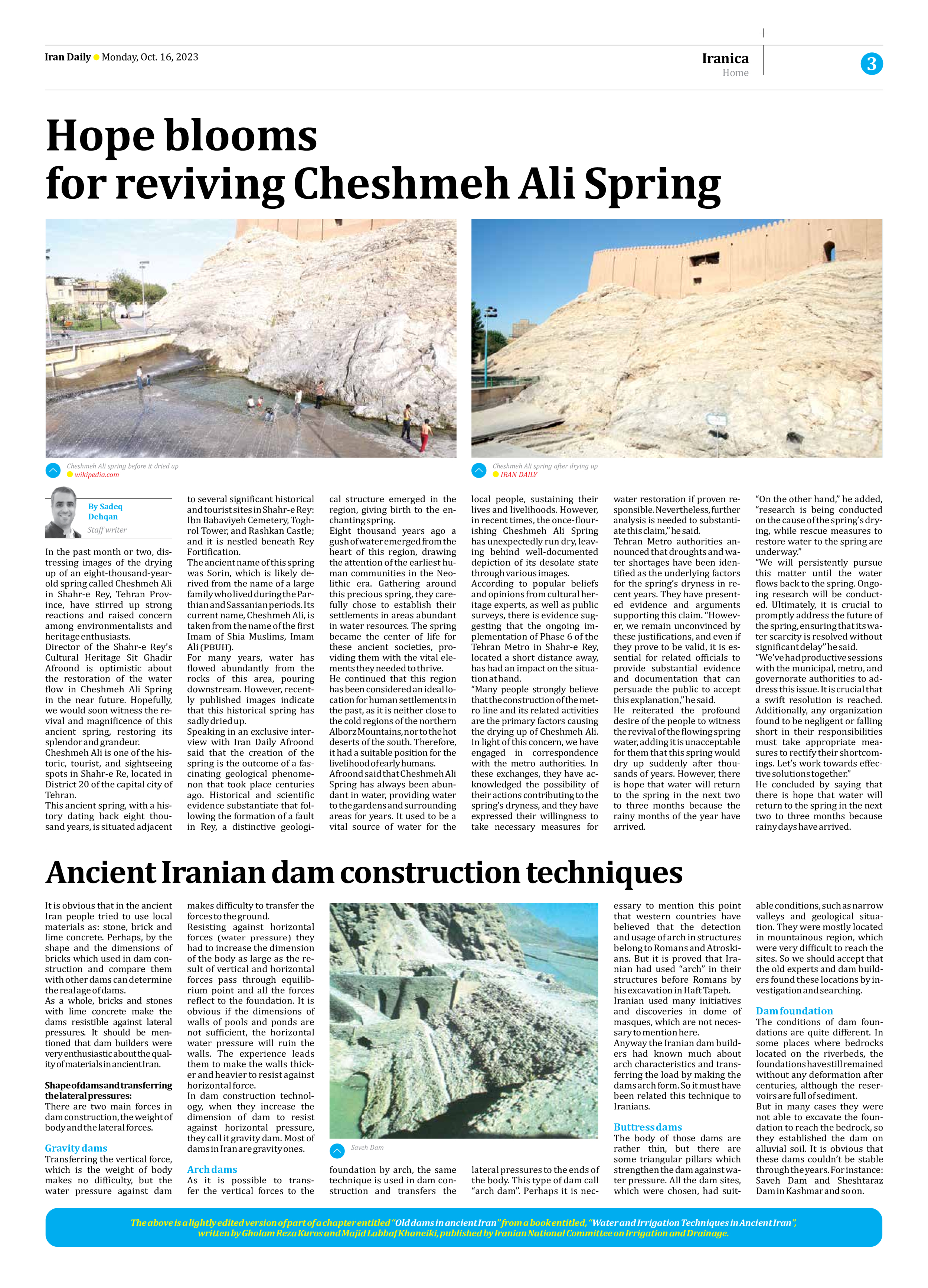
Ancient Iranian dam construction techniques
It is obvious that in the ancient Iran people tried to use local materials as: stone, brick and lime concrete. Perhaps, by the shape and the dimensions of bricks which used in dam construction and compare them with other dams can determine the real age of dams.
As a whole, bricks and stones with lime concrete make the dams resistible against lateral pressures. It should be mentioned that dam builders were very enthusiastic about the quality of materials in ancient Iran.
Shape of dams and transferring the lateral pressures:
There are two main forces in dam construction, the weight of body and the lateral forces.
Gravity dams
Transferring the vertical force, which is the weight of body makes no difficulty, but the water pressure against dam makes difficulty to transfer the forces to the ground.
Resisting against horizontal forces (water pressure) they had to increase the dimension of the body as large as the result of vertical and horizontal forces pass through equilibrium point and all the forces reflect to the foundation. It is obvious if the dimensions of walls of pools and ponds are not sufficient, the horizontal water pressure will ruin the walls. The experience leads them to make the walls thicker and heavier to resist against horizontal force.
In dam construction technology, when they increase the dimension of dam to resist against horizontal pressure, they call it gravity dam. Most of dams in Iran are gravity ones.
Arch dams
As it is possible to transfer the vertical forces to the foundation by arch, the same technique is used in dam construction and transfers the lateral pressures to the ends of the body. This type of dam call “arch dam”. Perhaps it is necessary to mention this point that western countries have believed that the detection and usage of arch in structures belong to Romans and Atroskians. But it is proved that Iranian had used “arch” in their structures before Romans by his excavation in Haft Tapeh.
Iranian used many initiatives and discoveries in dome of masques, which are not necessary to mention here.
Anyway the Iranian dam builders had known much about arch characteristics and transferring the load by making the dams arch form. So it must have been related this technique to Iranians.
Buttress dams
The body of those dams are rather thin, but there are some triangular pillars which strengthen the dam against water pressure. All the dam sites, which were chosen, had suitable conditions, such as narrow valleys and geological situation. They were mostly located in mountainous region, which were very difficult to reach the sites. So we should accept that the old experts and dam builders found these locations by investigation and searching.
Dam foundation
The conditions of dam foundations are quite different. In some places where bedrocks located on the riverbeds, the foundations have still remained without any deformation after centuries, although the reservoirs are full of sediment.
But in many cases they were not able to excavate the foundation to reach the bedrock, so they established the dam on alluvial soil. It is obvious that these dams couldn’t be stable through the years. For instance: Saveh Dam and Sheshtaraz Dam in Kashmar and so on.
The above is a lightly edited version of part of a chapter entitled “Old dams in ancient Iran” from a book entitled, “Water and Irrigation Techniques in Ancient Iran”,
written by Gholam Reza Kuros and Majid Labbaf Khaneiki, published by Iranian National Committee on Irrigation and Drainage.







